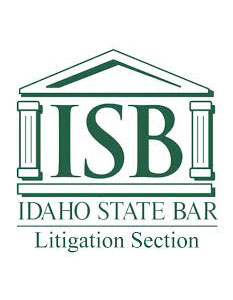T-bone accidents are one of the most dangerous types of car collisions. This type of accident, also known as a side-impact collision, happens when the front of one vehicle crashes into the side of another, forming a “T” shape. The force of the impact can cause severe injuries to drivers and passengers because the side of a car offers less protection than the front or rear. Understanding the claims process for T-bone accidents is important for those involved in such crashes, especially when it comes to seeking compensation for damages and injuries.
T-bone accidents often happen at intersections, where drivers may run red lights, ignore stop signs, or fail to yield the right of way. They can also occur in parking lots or on highways when a driver makes a sudden lane change without checking for other vehicles. When these accidents happen, the driver who caused the crash may be held responsible, but determining fault is not always straightforward. Gathering evidence, such as witness statements and police reports, is necessary to prove liability and ensure that the injured party receives proper compensation. At, Hepworth Holzer, LLP , we are here to guide you through the legal process and help you navigate the complexities of your case.
Causes of T-Bone Accidents
There are several reasons why T-bone accidents occur, but the main factor is usually a driver’s failure to obey traffic laws. For instance, when one driver runs a red light or a stop sign, it puts other drivers at risk of a side-impact collision. In many cases, distracted driving plays a significant role in these accidents. Texting while driving, adjusting the radio, or looking at a GPS can cause a driver to miss important traffic signals. Speeding is another common cause. When a driver is going too fast, they may not have enough time to stop at an intersection, leading to a serious crash.
Poor weather conditions can also contribute to T-bone accidents. Rain, snow, or ice can make roads slippery, making it harder for drivers to stop in time. Reduced visibility due to fog or heavy rain can cause drivers to miss traffic signs or signals. Additionally, mechanical failures, such as brake problems or tire blowouts, can prevent a driver from stopping their vehicle, resulting in a collision.
In some cases, both drivers may share fault for the accident. For example, one driver may run a red light while the other is speeding. In such situations, determining who is more at fault can be challenging, and both parties may need to file claims with their insurance companies. Working with an experienced attorney can help in navigating these complexities and ensuring that the injured party receives fair compensation.
Injuries from T-Bone Accidents
The injuries sustained in a T-bone accident can be severe due to the nature of the collision. Since the side of a car provides less protection than the front, occupants are more likely to suffer serious harm. Common injuries include broken bones, head trauma, spinal cord injuries, and internal bleeding. The driver or passengers on the side of the vehicle that is struck are especially vulnerable to life-threatening injuries.
Whiplash is another common injury in T-bone accidents. The sudden impact can cause the neck to snap back and forth, leading to strain on the muscles and ligaments. While whiplash may seem minor at first, it can cause long-term pain and discomfort if not treated properly. Head injuries, such as concussions or traumatic brain injuries, are also common in these types of accidents and can have lasting effects on a person’s cognitive abilities.
In the most severe cases, T-bone accidents can result in fatalities. When a vehicle is hit on its side at high speeds, the force of the impact can be deadly, especially for those seated closest to the point of impact. Surviving family members may be able to file a wrongful death claim to seek compensation for their loss.
Filing a Claim After a T-Bone Accident
Filing a claim after a T-bone accident involves several steps. The first step is to seek medical attention for any injuries. Even if the injuries seem minor, it is important to have a doctor evaluate the situation, as some injuries, like whiplash or concussions, may not show symptoms right away. A medical report will also serve as important evidence in the claims process, as it documents the extent of the injuries.
After receiving medical treatment, the next step is to report the accident to the police. A police report is crucial in establishing the facts of the case and identifying the parties involved. The report will also include information about any traffic violations, such as running a red light or speeding, which can help prove fault in the accident.
Once the police report is filed, the injured party should contact their insurance company to start the claims process. It is important to provide the insurance company with all necessary information, including the police report, medical records, and any other evidence gathered at the scene of the accident. In some cases, the insurance company of the at-fault driver may contact the injured party to offer a settlement. However, it is important to consult with an attorney before accepting any offers, as the initial settlement may not cover all medical expenses, lost wages, and other damages.
Challenges in T-Bone Accident Claims
There are several challenges that may arise during the claims process for a T-bone accident. One of the biggest challenges is proving fault. In some cases, the at-fault driver may deny responsibility for the accident, or both drivers may share some degree of fault. Without clear evidence, such as traffic camera footage or witness statements, it can be difficult to determine who is responsible for the crash.
Rules of a Personal Injury Claim Choosing a Personal Injury AttorneyRelated Videos
Another challenge is dealing with insurance companies. Insurance adjusters may try to minimize the amount of compensation by arguing that the injured party was partially at fault or that the injuries are not as severe as claimed. They may also offer a low settlement in hopes of avoiding a larger payout later. Having an attorney on your side can help protect your rights and ensure that you receive fair compensation for your injuries.
In addition to these challenges, there may be legal hurdles to overcome, such as filing deadlines and complex legal procedures. Each state has its own laws regarding the time frame for filing a personal injury claim, and missing these deadlines can result in the loss of the right to seek compensation. An attorney can help navigate these legal obstacles and ensure that the claim is filed correctly and on time.
Compensation for T-Bone Accidents
Those injured in a T-bone accident may be entitled to various forms of compensation. Medical expenses are often the largest part of a claim, as the cost of treating injuries from a serious accident can be substantial. This may include hospital bills, surgeries, physical therapy, and any ongoing medical care required as a result of the injuries. In addition to medical expenses, victims may also be able to recover lost wages if they are unable to work due to their injuries.
Pain and suffering is another form of compensation that may be available in a T-bone accident claim. This covers the physical pain and emotional distress caused by the accident and its aftermath. In cases where the accident results in long-term or permanent disability, the injured party may also be entitled to compensation for loss of earning capacity, which takes into account the impact the injuries have on the person’s ability to work in the future.
In the case of a wrongful death claim, surviving family members may be able to seek compensation for funeral expenses, loss of financial support, and the emotional pain caused by the loss of a loved one. Each case is unique, and the amount of compensation will depend on the specific circumstances of the accident and the extent of the injuries or losses involved.
Verdicts & Settlements
The Role of an Attorney in T-Bone Accident Claims
Navigating the claims process after a T-bone accident can be overwhelming, especially for those dealing with serious injuries. An attorney can provide valuable assistance by handling the legal aspects of the case, gathering evidence, negotiating with insurance companies, and representing the injured party in court if necessary. An attorney will also ensure that the injured party receives the compensation they deserve for their injuries, medical expenses, lost wages, and other damages.
Working with an attorney can also help alleviate some of the stress involved in dealing with insurance companies. Insurance adjusters may try to pressure the injured party into accepting a low settlement, but an attorney will advocate on behalf of their client to ensure that the settlement is fair and covers all necessary expenses. In cases where the at-fault driver denies responsibility, an attorney can help gather the evidence needed to prove liability and hold the responsible party accountable.
If you or a loved one has been involved in a T-bone accident, it is important to seek legal representation to ensure that your rights are protected and that you receive the compensation you deserve. At Hepworth Holzer, LLP, our experienced team is dedicated to helping accident victims navigate the claims process and recover from their injuries. Contact us today to schedule a consultation and learn how we can assist you in your case. Let us help you get the justice and compensation you deserve.











